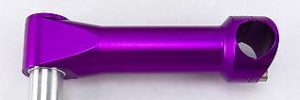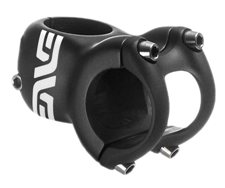When Mountain Bike Geometry Stops Paying Attention to Pedaling Mechanics
The mountain bike industry has made huge strides in technology in recent years. From wider tires and suspension improvements to more balanced and stable frame designs, a properly set-up modern mountain bike is akin to what shaped skis offered skiers when they first came out. The technology has made it notably easier to ride more challenging terrain better.
This being said, in addition to ignoring the design opportunities shorter cranks offer mountain bikes, there is another place that mountain bike design has gone a bit awry. Modern frame geometry on most XC and trail bikes has lost perspective on the reality of cycling biomechanics – it isn’t designed around putting your body in a position where you can actually pedal the bike as efficiently as possible. This means riders can be cramped when climbing in particular.
How the Quest for Better Handling Shrunk Mountain Bikes
How did this happen? Well the quest for more stable steering, which has been a great thing in general, has led to the effective reach to the bar becoming much shorter on today’s bikes than it was 20 years ago. While the frame reach on a modern frame has changed little in a given frame size compared to by-gone years, the stems being used 20 years ago were often 6-10cm longer. This means that the reach to the stem on a ’19 Niner RKT out of the box is 6-10cm shorter than a 1999 GT Zaskar in a similar frame size. While wider bars do mitigate some of this, they don’t mitigate that big a difference.
Out of the box, the average XC/trail style bike in a given size today puts the rider in a much shorter riding position today. A position too short to climb optimally for many. Stack numbers (handlebar height) have also increased as fork travel has grown, which can limit some shorter riders, but that is another topic altogether…
Cycling Biomechanics Still Matter

Yesterday’s Mountain Bike Stem Length

Today’s Mountain Bike Stem Length
A shorter and more upright position may be what folks who used to ride too long need. If this is you, you love the change. However, for the rest of us, unless you make some real changes to the size bike you ride from twenty years ago, your trail bike out of the box today may not fit you very well (especially in terms of climbing mechanics). This is a main reason we are heavy advocates of a rider being fit first – in advance of choosing a bike – and letting your riding position determine the bikes that will work best for you. There is no reason to guess (or try dozens of bikes…) in hopes of tripping upon something that may work when your riding position can take this crucial bike selection variable out of the equation. You may fit best on a size that doesn’t at all correspond to what the past or your height may make you think.
5’7″ and a Size Large Mountain Bike
Where does this leave riders? The biomechanics or joint loads of my riding position haven’t changed much in the past 20 years. However, riding on a bike with the same listed size as I did years ago results in diminished climbing efficiency and a sore back; without using a ridiculously long stem (by today’s standard) I can’t come close to achieving my riding position on a 16″/Small bike any longer. I ride a trail bike listed as a bigger size than I used to. I now ride a medium with a longer stem than is often recommended for a modern trail bike (usually 75mm). The bigger frame gives me 2cm+ (~1″) of the lost reach back from the 75mm stem being 45mm shorter than what I used to ride most bikes my size (120mm) and I end up with a saddle to stem measurement that is about 3cm shorter than my optimal position over the past twenty years. When combined with the extra reach a wider bar provides, I’m within a centimeter.
This being said, if standover height isn’t an issue, I actually fit best on a Large – two sizes bigger than 20 years ago – on many bikes. Only on a Large can I use a stem in the 40-60mm range, which is what many modern trail bikes recommend for handling.
So, if someone who is 5’7″ (on a tall day) fits best on a Large, what is someone over 6′ tall supposed to do? That is the question I’m asking. The geometry changes to improve stability and handling in recent years are great, but it is time for sizes to be adjusted to address the reality that the biomechanics of the humans riding the bike. A 53cm road bike should not translate to a Large mountain bike.
The Bottom Line:
XC/trail mountain bikes today are significantly shorter than the same written size, in terms of reach to the bar, than a bike from twenty years ago. The biomechanics of pedaling haven’t changed in that same time period. Frame reach should be longer for a given size.
Most bike manufacturers have not lengthened frame reach in a given size nearly enough to accommodate for the shorter stems and slacker headtube angles that are now the norm. Hopefully mountain bike designers start thinking a bit more about the biomechanics behind riding and adjust geometry representation and range accordingly. In the meantime, remember that it always makes sense to be fit in advance of purchase and to not be afraid of the results if they say you fit best on a bike that has a listed size that is a fair amount bigger than you may have expected.
Contact us if you are interested in a fitting or want to use your existing fit information to find a new bike.








